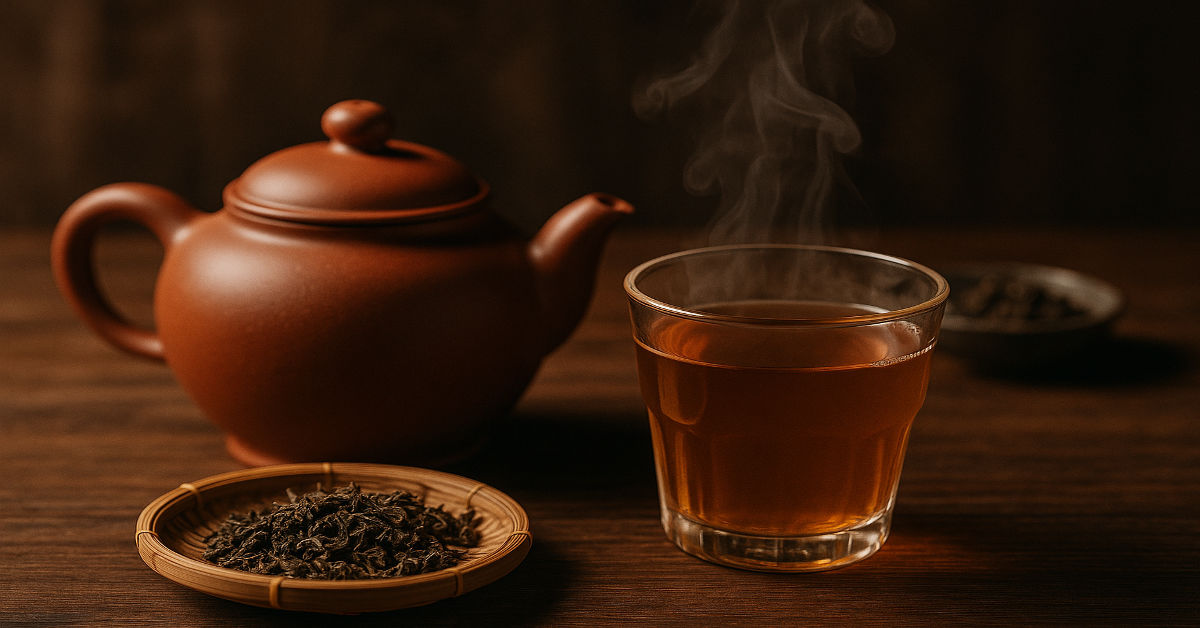When dining in a traditional Chinese restaurant it’s almost a ritual to be greeted with a warm pot of tea before your meal arrives. But have you ever paused mid-sip and wondered—what exactly is this tea? Is it a special blend? A specific type unique to Chinese culinary culture? Or just a customary beverage served to guests? In this article, we dive deep into the flavorful world of Chinese restaurant tea and What Is the Tea Used in Chinese Restaurants, exploring its origins, varieties, health benefits, and cultural significance. If you’ve ever pondered what’s in that comforting cup of tea at your local Chinese spot, prepare for a fascinating, aromatic journey.
The Tradition of Tea in Chinese Cuisine
Tea is more than a beverage in Chinese culture—it is a symbol of hospitality, respect, and tradition. Serving tea to guests is a long-standing practice in China, with roots dating back over 4,000 years. When you sit down at a Chinese restaurant and are offered tea, it’s a gesture of welcome and warmth.
Unlike Western dining where tea may be optional or served post-meal, in Chinese establishments, it’s often the first thing brought to your table—sometimes even before the menus. It prepares the palate, aids digestion, and enhances the entire culinary experience.
Most Common Types of Tea Used in Chinese Restaurants
Let’s explore the most widely served teas in Chinese restaurants and what makes each of them special.
1. Jasmine Tea – Fragrant and Floral
Jasmine tea is arguably the most common tea served in Chinese restaurants around the world. It is typically made by infusing green tea leaves with jasmine blossoms, giving it a subtly sweet and floral aroma.
- Flavor profile: Light, smooth, with fragrant notes of jasmine.
- Why it’s popular: It pairs well with many dishes, especially dim sum and seafood.
- Health benefits: Rich in antioxidants, may reduce stress and improve heart health.
Fun fact: The scenting process involves layering tea leaves with jasmine flowers for several hours or even days, allowing the fragrance to naturally infuse.
2. Oolong Tea – The Perfect Balance
Oolong tea is a semi-oxidized tea that lies between green and black tea, offering the best of both worlds. It is popular in Cantonese-style Chinese restaurants.
- Flavor profile: Earthy, toasty, sometimes floral or fruity.
- Why it’s popular: Its medium strength and bold flavor help cut through greasy or rich foods.
- Health benefits: Aids digestion, boosts metabolism, and supports heart health.
In Taiwan and southern China, oolong is especially revered and often used in Gongfu tea ceremonies.
3. Pu-erh Tea – Deep and Aged
Pu-erh (pronounced poo-air) tea is a fermented and aged black tea from Yunnan province. Often served in high-end Chinese restaurants, especially those offering banquet-style dining, pu-erh is known for its rich, earthy flavor.
- Flavor profile: Strong, earthy, woody, sometimes musty in a good way.
- Why it’s popular: It cuts through fatty foods like pork, duck, and fried dishes.
- Health benefits: Believed to aid digestion and lower cholesterol levels.
Its post-fermentation process, sometimes aged for decades, makes it a tea for the connoisseur.
4. Chrysanthemum Tea – Caffeine-Free and Calming
Unlike the others, chrysanthemum tea is not a traditional tea (as it doesn’t come from the Camellia sinensis plant) but rather an infusion made from dried chrysanthemum flowers.
- Flavor profile: Mild, floral, slightly sweet.
- Why it’s popular: Served often in herbal restaurants or alongside Chinese herbal meals.
- Health benefits: Cooling to the body, supports liver health, and aids in relieving fever or headaches.
Chrysanthemum tea is often paired with rock sugar or blended with pu-erh tea in some regions.
5. Boiled Tea Blends or House Teas
Many Chinese restaurants serve what is known as “house tea.” This is often a blend of various teas or a strong brew of a single kind—usually oolong or jasmine. Some may even use low-grade loose-leaf tea or tea bricks, especially in larger commercial establishments.
- Flavor profile: Varies by restaurant, but generally mild to medium strength.
- Why it’s popular: Cost-effective and complements a wide range of flavors.
- Health benefits: Depends on the ingredients, but typically aids digestion and refreshes the palate.
How the Tea Is Brewed in Chinese Restaurants
The brewing method can significantly affect the tea’s taste. In most restaurants:
- The tea is brewed using loose leaves, not tea bags.
- It’s often made in large stainless-steel kettles or tea dispensers.
- The water temperature is carefully controlled—especially for green and oolong teas.
Many restaurants reuse leaves for multiple brews, as good-quality Chinese teas are designed to be steeped multiple times, with each infusion revealing new layers of flavor.
Why Chinese Restaurants Offer Tea for Free
You might notice that most Chinese restaurants don’t charge for tea. Why is that?
- Cultural custom: In Chinese culture, tea is a symbol of welcome, so offering it free of charge shows hospitality.
- Enhances the meal: Tea is known to cleanse the palate, making it easier to enjoy the rich, diverse flavors of Chinese cuisine.
- Digestion aid: Traditional Chinese medicine values tea for its digestive benefits, especially helpful with fried or oily dishes.
- Simplicity over soda: Unlike Western fast-food chains, Chinese dining emphasizes balance and wellness, and tea fits naturally into this philosophy.
The Role of Tea in Chinese Dining Etiquette
In Chinese culture, tea is deeply tied to manners and respect. Here are some etiquette points you might not know:
- Tapping fingers: In some regions like Canton, diners tap two fingers on the table after being poured tea to say “thank you”—a custom dating back to an emperor in disguise.
- Pouring for others: It’s polite to pour tea for others at your table before pouring your own.
- Refilling the pot: Don’t be surprised if a server refills your pot several times during your meal.
These subtle gestures are part of what makes the Chinese tea experience so enriching.
Can You Recreate the Chinese Restaurant Tea Experience at Home?
Absolutely! Here’s how:
- Choose the right tea: Jasmine, oolong, and pu-erh teas are widely available online or at Asian supermarkets.
- Use loose leaves: Avoid tea bags for a more authentic taste.
- Invest in a teapot: A traditional Chinese clay teapot or a glass infuser pot will help replicate the restaurant experience.
- Brew it right: Use hot (not boiling) water and steep for 1–2 minutes to start. Adjust to taste.
- Serve with meals: Enjoy your tea alongside Chinese dishes to fully appreciate its complementary flavors.
The Health Benefits of Chinese Restaurant Teas
Across all the varieties mentioned, the common thread is that Chinese teas are packed with health benefits. Here are some shared perks:
- Rich in antioxidants: Supports immune health and reduces inflammation.
- Boosts metabolism: Especially oolong and pu-erh.
- Improves digestion: Helps break down heavy meals.
- Calms the mind: The ritual of sipping warm tea promotes mindfulness.
In essence, what you’re drinking at a Chinese restaurant is not just a beverage—it’s a health tonic steeped in centuries of tradition.
Final Thoughts
So, what is the tea used in Chinese restaurants? It’s usually jasmine, oolong, pu-erh, chrysanthemum, or a house blend—each offering its own distinct flavor and story. Beyond taste, it’s a reflection of Chinese culture, wellness traditions, and social etiquette.
Next time you’re handed a warm pot of tea in a Chinese restaurant, take a moment to appreciate it. That single cup connects you to thousands of years of history, flavor, and culture—one delightful sip at a time.
FAQs
1. Is the tea in Chinese restaurants caffeinated?
Yes, most teas served (like jasmine, oolong, and pu-erh) contain moderate caffeine. Chrysanthemum tea, however, is caffeine-free.
2. Why does the tea taste different in every Chinese restaurant?
Different restaurants use different blends, leaf grades, and brewing methods. Some may use more tea leaves or brew longer, affecting the strength and taste.
3. Can I buy the same tea used in Chinese restaurants?
Yes, you can find popular Chinese teas like jasmine, oolong, and pu-erh in Asian grocery stores or online tea shops.
4. Is it okay to drink the tea throughout the entire meal?
Absolutely! In Chinese dining, tea is meant to be enjoyed before, during, and after the meal to cleanse the palate and aid digestion.
5. Why is the tea sometimes very strong or bitter?
Over-brewing or using too many leaves can make tea taste bitter. Some restaurants intentionally brew strong tea to match flavorful dishes.


